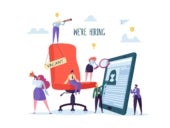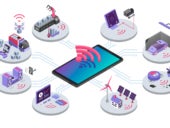
Artificial Intelligence
Artificial IntelligenceGoogle Gemini vs. ChatGPT: Is Gemini Better Than ChatGPT?
Now that Google Gemini has entered the arena, how well can it compete against OpenAI’s ChatGPT?

Now that Google Gemini has entered the arena, how well can it compete against OpenAI’s ChatGPT?

Microsoft’s generative AI companion Copilot gets more deeply integrated into Windows 11 with the latest software update, which also includes new voice control and accessibility tools.

The average salary potential for each top tech skill is also provided by Indeed. Companies hiring for these tech skills include Apple and NVIDIA.

Get up and running with ChatGPT with this comprehensive cheat sheet. Learn everything from how to sign up for free to enterprise use cases, and start using ChatGPT quickly and effectively.

Microsoft just rolled out two new Copilot-enabled devices: Surface Pro 10 and Surface Laptop 6.

In this RSA roundup, we also cover AI news about IBM, AWS and Microsoft, as well as details about Cisco Hypershield.

Learn how to access Meta’s new AI model Llama 3, which sets itself apart by being open to use under a license agreement.

Australian businesses are beginning to effectively grapple with AI and build solutions specific to their needs. Here are notable use cases of businesses using AI.

The year 2024 is bringing a return to stable tech salary growth in APAC, with AI and data jobs leading the way. This follows downward salary pressure in 2023, after steep increases in previous years.

TechRepublic identified the top four trends emerging in IoT that businesses in the U.K. should be aware of.

The enterprise plan seeks to fill a need for generative AI tools for small and medium businesses. Plus, a Claude app is now on iOS.

AI is now the present, as well as the future. Learn to use valuable tools such as ChatGPT and more to increase productivity or strengthen teaching skills.

Security researchers can earn up to $10,000 for critical vulnerabilities in the generative AI products.

TechRepublic Premium content helps you solve your toughest IT issues and jump-start your career or next project.

The best tech companies to work for based on LinkedIn rankings include Amazon in the number one spot.

Finding time for videos and podcasts you enjoy or could benefit from professionally is hard when you’re running a business; summaries are an excellent solution.

The deal is intended to strengthen IBM’s hybrid and multicloud offerings and generative AI deployment.

Get up and running with ChatGPT with this comprehensive cheat sheet. Learn everything from how to sign up for free to enterprise use cases, and start using ChatGPT quickly and effectively.

Researchers from the University of Illinois Urbana-Champaign found that OpenAI’s GPT-4 is able to exploit 87% of a list of vulnerabilities when provided with their NIST descriptions.

Generative artificial intelligence has rapidly gained traction amongst businesses, professionals and consumers. But what is generative AI, how does it work and what is all the buzz about? Read on to find out.